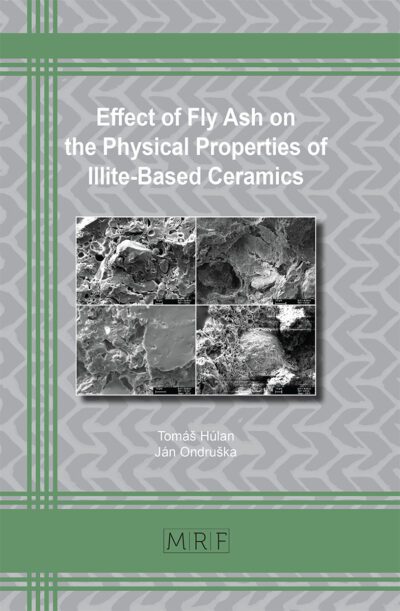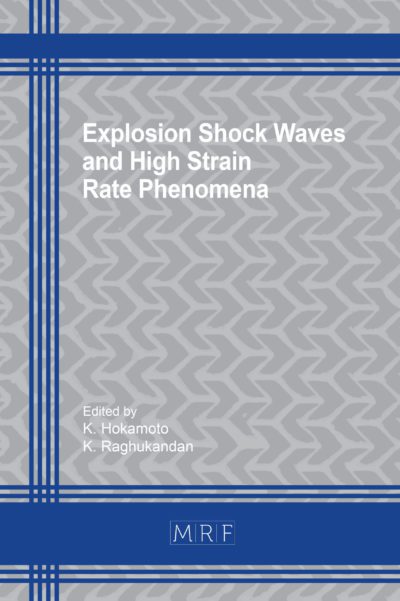Influence of thermo-mechanical joining process on the microstructure of a hypoeutectic aluminium cast alloy
Thomas Borgert, Moritz Neuser, Eugen Wiens, Olexandr Grydin, Werner Homberg, Mirko Schaper
download PDFAbstract. Requirements of multi-material construction involve adjustments to standard joining techniques. Especially the growing importance of integral cast components poses additional engineering challenges for the industry. One approach to achieve these goals are adaptable joining elements formed by friction spinning. This approach uses friction-induced heat to form customisable joining elements to join sheets for different boundary conditions, even for brittle cast materials. It is possible to react immediately to adapt to the joining process inline and reduce the amount of different joining elements. As the joining partner serve casting plates of the aluminium casting alloy EN AC–AlSi9, which is processed in the sand casting. Joining hypoeutectic AlSi alloys constitutes a challenge because the brittle character of these cause cracks in the joint during conventional mechanical joining. Furthermore, the friction-induced heat of the novel joining process causes a finer microstructure in the hypoeutectic AlSi9 casting alloy. In particular, the eutectic Si is more fine-grained, resulting in higher joint ductility. This study indicates the joining suitability of a hypoeutectic aluminium casting alloy in combination with adaptive manufactured additional joining elements. Here, various mechanical and microstructural investigations validate the influence of the thermomechanical joining technique. In conclusion, the potential of this joining process is presented regarding the joinability of cast aluminium components.
Keywords
Joining, Casting, Microstructure
Published online 3/17/2023, 8 pages
Copyright © 2023 by the author(s)
Published under license by Materials Research Forum LLC., Millersville PA, USA
Citation: Thomas Borgert, Moritz Neuser, Eugen Wiens, Olexandr Grydin, Werner Homberg, Mirko Schaper, Influence of thermo-mechanical joining process on the microstructure of a hypoeutectic aluminium cast alloy, Materials Research Proceedings, Vol. 25, pp 187-194, 2023
DOI: https://doi.org/10.21741/9781644902417-24
The article was published as article 24 of the book Sheet Metal 2023
![]() Content from this work may be used under the terms of the Creative Commons Attribution 3.0 licence. Any further distribution of this work must maintain attribution to the author(s) and the title of the work, journal citation and DOI.
Content from this work may be used under the terms of the Creative Commons Attribution 3.0 licence. Any further distribution of this work must maintain attribution to the author(s) and the title of the work, journal citation and DOI.
References
[1] G. Pina Cipriano, A. Ahiya, J.F. dos Santos, P. Vilaça, S.T. Amancio-Filho, Single-phase friction riveting: metallic rivet deformation, temperature evolution, and joint mechanical performance, Weld World 64 (2020) 47–58. https://doi.org/10.1007/s40194-019-00803-3
[2] M. Chiaberge, New Trends and Developments in Automotive Industry, InTech, London, 2011. https://doi.org/10.5772/1821
[3] M. Haghshenas, A.P. Gerlich, Joining of automotive sheet materials by friction-based welding methods: A review, Engineering Science and Technology, an International Journal 21 (2018) 130–148. https://doi.org/10.1016/j.jestch.2018.02.008
[4] J. Machuta, I. Nová, P. Kejzlar, Structure and Mechanical Properties of Aluminium Alloys AlSi10 and AlSi5Mg, Manufacturing Technology 17 (2017) 772–777. https://doi.org/10.21062/ujep/x.2017/a/1213-2489/MT/17/5/772
[5] J.G. Kaufman, E.L. Rooy, Aluminum alloy castings: Properties, processes, and applications, ASM International, Novelty, 2004. https://doi.org/10.31399/asm.tb.aacppa.9781627083355
[6] K. Martinsen, S.J. Hu, B.E. Carlson, Joining of dissimilar materials, CIRP Annals 64 (2015) 679–699. https://doi.org/10.1016/j.cirp.2015.05.006
[7] G. Di Michele, P. Guglielmi, G. Palumbo, D. Sorgente, Investigation on the Strain Behaviour of a Precipitation-Hardenable Aluminium Alloy through a Temperature Gradient Based Heat Treatment, Key Eng. Mater. 639 (2015) 361–368. https://doi.org/10.4028/www.scientific.net/KEM.639.361
[8] H. Warlimont, W. Martienssen (Eds.), Springer Handbook of Materials Data, 2nd ed., Springer International Publishing, Cham, 2018. https://doi.org/10.1007/978-3-319-69743-7
[9] O. Siret, C. Desrayaud, M.A. Tourabi, Thermomechanical Joining of Aluminium Alloys: Effects of the Shear on the Quality of the Joining, MSF 638-642 (2010) 3716–3721. https://doi.org/10.4028/www.scientific.net/MSF.638-642.3716
[10] G. Çam, S. Mistikoglu, Recent Developments in Friction Stir Welding of Al-alloys, J. of Materi Eng and Perform 23 (2014) 1936–1953. https://doi.org/10.1007/s11665-014-0968-x
[11] J. Min, J. Li, Y. Li, B.E. Carlson, J. Lin, W.-M. Wang, Friction stir blind riveting for aluminum alloy sheets, J. Mater. Process. Technol. 215 (2015) 20–29. https://doi.org/10.1016/j.jmatprotec.2014.08.005
[12] M. Costas, D. Morin, J.K. Sønstabø, M. Langseth, On the effect of pilot holes on the mechanical behaviour of flow-drill screw joints. Experimental tests and mesoscale numerical simulations, J. Mater. Process. Technol. 294 (2021) 117133. https://doi.org/10.1016/j.jmatprotec.2021.117133
[13] C. Wischer, W. Homberg, A contribution on versatile process chains: joining with adaptive joining elements, formed by friction spinning, Prod. Eng. Res. Devel. 16 (2022) 379–388. https://doi.org/10.1007/s11740-021-01094-8
[14] C. Wischer, W. Homberg, Further Development of an Adaptive Joining Technique Based on Friction Spinning to Produce Pre-Hole-Free Joints, Key Eng. Mater. 926 (2022) 1468–1478. https://doi.org/10.4028/p-1n6741
[15] M. Neuser, O. Grydin, A. Andreiev, M. Schaper, Effect of Solidification Rates at Sand Casting on the Mechanical Joinability of a Cast Aluminium Alloy, Metals 11 (2021) 1304. https://doi.org/10.3390/met11081304














